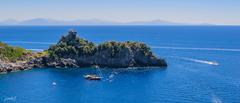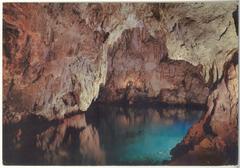
Comprehensive Guide to Visiting Amalfi, Province of Salerno, Italy
Date: 14/08/2024
Captivating Introduction
Table of Contents
- Dive into Amalfi’s Timeless Charm
- Early Beginnings: A Maritime Marvel
- Independence and Prosperity: The Golden Era
- Norman Conquest and Decline: The Fall from Grace
- Cultural and Educational Contributions: The Intellectual Hub
- Modern Era and Tourism: From Ruins to Resorts
- Main Sights and Architectural Heritage: The Artistic Heartbeat
- Traditional Events and Cultural Significance: Join the Celebration
- Transportation and Accessibility: Getting There
- Cultural Products and Local Specialties: Taste of Amalfi
- Significance of Amalfi, Province of Salerno, Italy
- A Gem Like No Other
- Historical Significance
- Architectural Significance
- Cultural Significance
- Economic Significance
- Natural Significance
- Artistic and Literary Significance
- Religious Significance
- Maritime Significance
- Modern Significance
- Visitor Tips
- Best Time to Visit
- Getting There
- Local Cuisine
- Accommodations
- Must-See Attractions
- Hidden Gems and Local Secrets
- Sensory Descriptions
- Interactive Elements
- Cultural Context and Etiquette
- Pop Culture References
- Local Lingo Lessons
- Seasonal Highlights
- Myth Busting and Surprises
- Storytelling Elements
- FAQ
- Call to Action
Dive into Amalfi’s Timeless Charm
Early Beginnings: A Maritime Marvel
Imagine a bustling port where traders exchange vibrant Byzantine silks for glistening gold dinars. Welcome to Amalfi, a town in the province of Salerno, Campania, Italy, that flourished as a maritime powerhouse. Picture traders enjoying VIP status in Islamic ports, a testament to Amalfi’s trading prowess! The Amalfi tables (Tavole amalfitane) were the maritime law bible for Christian port cities. By the 9th century, while most of Italy was still bartering, Amalfi merchants were sealing land deals with gold coins. Talk about being ahead of the curve!
Independence and Prosperity: The Golden Era
Amalfi’s audacious declaration of independence in the 7th century saw it rise to rival Pisa and Genoa. By the reign of Duke Manso (966–1004), the population soared to around 70,000-80,000. Under Manso and his successors, Amalfi’s schools of law and mathematics became the Harvard and MIT of the medieval world. And Flavio Gioia? He might have been the Steve Jobs of his time, credited with introducing the mariner’s compass to Europe.
Norman Conquest and Decline: The Fall from Grace
The Normans stormed Amalfi in 1073, but the town retained many rights. Yet, in 1131, Roger II of Sicily took the town after some serious drama involving keys to the citadel. The Pisans, Amalfi’s commercial rivals, sacked the city in 1133, and a tsunami in 1343 dealt the final blow. Despite the decline, the Amalfian Laws held sway in the Mediterranean until 1570.
Cultural and Educational Contributions: The Intellectual Hub
Amalfi was the medieval Silicon Valley, famous for its schools of law and mathematics. Scholars from all over Europe flocked here, and the introduction of the mariner’s compass by Flavio Gioia revolutionized navigation.
Modern Era and Tourism: From Ruins to Resorts
Fast forward to the Edwardian era, and Amalfi transformed into a chic seaside resort. The Luna Convento and Cappuccini Convento, former monasteries, became the hotspots for wintering British aristocrats. Richard Wagner and Henrik Ibsen even finished some of their masterpieces here!
Main Sights and Architectural Heritage: The Artistic Heartbeat
Amalfi’s medieval architecture is epitomized by the cathedral of Sant’Andrea. Dating back to the 11th century, its Byzantine-style façade and late Baroque interior make it a must-see. The cathedral’s piazza is a sensory feast, with the scent of fresh lemons and the sound of church bells ringing.
Traditional Events and Cultural Significance: Join the Celebration
Amalfi’s calendar is packed with vibrant events. From the feast days of Saint Andrew to the Byzantine New Year’s Eve and the Historical Regatta, there’s always a reason to celebrate. Imagine competing in a traditional rowing competition among Italy’s historic maritime republics!
Transportation and Accessibility: Getting There
Reaching Amalfi is a breeze via the SS163 Amalfitana state road or the port of Amalfi. Passenger connections to Capri, Positano, and other hotspots make island hopping a delight. Naples and Salerno airports are your gateways to this coastal gem.
Cultural Products and Local Specialties: Taste of Amalfi
Indulge in Amalfi’s famed Limoncello, made from the unique lemons that grow in the region. These lemons are larger and more aromatic than typical lemons, giving the liqueur its distinctive flavor.
Significance of Amalfi, Province of Salerno, Italy
A Gem Like No Other
Nestled between the azure waves of the Tyrrhenian Sea and the rugged cliffs of the Sorrentine Peninsula, Amalfi is not just a town—it’s a living tapestry of history, culture, and natural splendor. Its unique blend of elements makes it an unparalleled destination.
Historical Significance
Imagine a time when Amalfi, known as ‘Amalfi Civitas,’ was a buzzing hub during the Byzantine Empire in the 6th century. This town wasn’t just another pretty face; it was a maritime powerhouse. With the creation of the ‘Tabula de Amalpha,’ Amalfi didn’t just govern its own waters but laid down the very laws that would shape modern maritime trade. Talk about making waves!
Architectural Significance
Walk through Amalfi, and you’ll feel the weight of centuries around you. The Cathedral of Saint Andrew, dating back to the 9th century, stands as a beacon of Amalfi’s rich past. Its Byzantine-style facade and bronze doors are like pages from a history book, waiting to be read. Don’t miss the Chiostro del Paradiso, a serene cloister built between 1266 and 1268, and the Romanesque-Moorish style Campanile, constructed between 1180 and 1276. These structures speak volumes about the town’s former wealth and influence.
Cultural Significance
Ever heard of the Regatta of the Historical Marine Republics? Every year, Amalfi, along with Pisa, Genoa, and Venice, competes in this thrilling event. Picture this: brightly colored ships with Amalfi’s winged rearing horse crest racing through the waters. It’s more than a race; it’s a celebration of tradition and pride. Mark your calendars for 2025 when Amalfi will host this spectacular event.
Economic Significance
In the 19th century, Amalfi was a paper-making giant with 60 working paper mills. Today, only Amatruda remains operational, but its legacy endures as the official paper supplier of the Vatican. Every document signed by the Pope? That’s Amatruda paper. Talk about leaving your mark on history!
Natural Significance
The Amalfi Coast isn’t just a pretty face; it’s a UNESCO World Heritage Site. Why? Because it’s an extraordinary cultural landscape where man and nature have danced together in harmony. The coast’s topography and history have preserved a nature that’s both unspoiled and intertwined with human activities. It’s a living testament to the beauty of coexistence.
Artistic and Literary Significance
Amalfi’s charm has inspired many artists and writers. In 1879, Henrik Ibsen strolled through its narrow streets and found the inspiration to complete his masterpiece ‘A Doll’s House.’ Imagine walking the same paths that sparked such creativity. Amalfi is a muse waiting to ignite your imagination.
Religious Significance
Amalfi isn’t just about history and beauty; it’s also a spiritual haven. The Cathedral of Sant’Andrea, with its magnificent bronze doors crafted in Constantinople around 1065, is a major pilgrimage site. This archiepiscopal see draws visitors from around the world, seeking both solace and awe.
Maritime Significance
Amalfi’s maritime history is the stuff of legends. As one of the first Italian maritime republics, it rivaled Pisa, Genoa, Venice, and Gaeta. Its ports buzzed with trade with North Africa, and the city retains cloisters of Arab-Sicilian architecture. The Arsenale, a partially preserved medieval shipyard, stands as a relic of its glorious past.
Modern Significance
Fast forward to today, and Amalfi has reinvented itself as a top tourist destination. With stunning coastal beauty, charming streets, and delectable cuisine, it’s a feast for the senses. Don’t forget to sample some limoncello, the region’s famous lemon liqueur. It’s Amalfi in a bottle!
Visitor Tips
Ready to pack your bags? Here are some tips to make your Amalfi adventure unforgettable:
- Best Time to Visit: Spring (April to June) and fall (September to October) offer pleasant weather and fewer crowds.
- Getting There: Trains connect Naples with Sorrento and Salerno, and boats run to many Amalfi Coast towns during the warmer months.
- Local Cuisine: Indulge in fresh seafood, pasta dishes, and, of course, limoncello.
- Accommodations: From luxury hotels to charming bed and breakfasts, there’s something for everyone. Check out Monte Solaro in Anacapri for stunning views of the twin bays of Salerno and Naples.
- Must-See Attractions: Don’t miss the Cathedral of Sant’Andrea, the Chiostro del Paradiso, the Paper Museum, and the Valle dei Mulini.
Hidden Gems and Local Secrets
While the main attractions are a must-see, take some time to explore Amalfi’s hidden corners. Wander off the beaten path to discover quaint alleys, local eateries, and artisan shops. Chat with the locals—they might just share a secret spot or two.
Sensory Descriptions
Feel the warm sun on your skin as you stroll through Amalfi’s streets. Hear the gentle lapping of the waves against the cliffs. Smell the fresh sea breeze mixed with the scent of lemon trees. Taste the rich flavors of local cuisine, from fresh seafood to zesty limoncello. Touch the ancient stones of the cathedral and feel the history beneath your fingertips.
Interactive Elements
Turn your visit into an adventure! Create a scavenger hunt for yourself: find the oldest building, taste the best gelato, or snap a photo of the most colorful boat. Each discovery will make your trip more memorable.
Cultural Context and Etiquette
When in Amalfi, do as the locals do. Greet with a friendly ‘Ciao!’ and remember that dining is an experience to be savored, not rushed. When visiting religious sites, dress modestly and respect the sanctity of the place.
Pop Culture References
Did you know Amalfi has been a backdrop for movies and literature? Think of the romantic scenes in ‘Under the Tuscan Sun’ or the vivid descriptions in ‘A Farewell to Arms.’ Amalfi’s charm transcends mediums.
Local Lingo Lessons
Want to impress the locals? Learn a few key phrases:
- Ciao! (Hello!)
- Grazie! (Thank you!)
- Per favore (Please)
- Buon appetito! (Enjoy your meal!)
Seasonal Highlights
Amalfi is beautiful year-round, but each season brings its own charm. Spring and fall are ideal for pleasant weather and fewer crowds. Summer is vibrant with festivals, while winter offers a peaceful retreat.
Myth Busting and Surprises
Think Amalfi is just another coastal town? Think again! It’s a place where history, culture, and nature converge in a unique blend. Did you know that Amalfi was once a powerful maritime republic? Or that its paper industry supplied the Vatican? There’s always more to discover.
Storytelling Elements
Picture this: In the 9th century, Amalfi was at its zenith, a bustling maritime republic. Ships from Amalfi sailed the Mediterranean, their crews navigating by the stars and trading with distant lands. Imagine the excitement and adventure of those times, as Amalfi’s influence spread far and wide.
FAQ
- What’s the best time to visit Amalfi? Spring and fall offer the best weather and fewer crowds.
- How do I get to Amalfi? Trains connect Naples with Sorrento and Salerno, and boats run to many Amalfi Coast towns during the warmer months.
- What should I eat in Amalfi? Don’t miss fresh seafood, pasta dishes, and limoncello.
- What are the must-see attractions? Key attractions include the Cathedral of Sant’Andrea, the Chiostro del Paradiso, the Paper Museum, and the Valle dei Mulini.
Call to Action
Ready to explore Amalfi? Download Audiala, the ultimate tour guide app, to unlock the town’s secrets and stories. With beautifully crafted audio guides, Audiala will make your visit to Amalfi an unforgettable adventure. Dive into the heart of Amalfi and let Audiala be your guide!







